Roman Legionary Pugio Dagger with Scabbard Mid 3rd century AD A good condition iron short dagger or pugio of the 'Kunzing Type' according to the classification of Bishop & Coulston, 2006, p. 164, with double-edged blade complete with scabbard in iron sheath, the blade characteristically leaf-shaped with pronounced waist and a double longitudinal channel defining a rib, which is typical of this category; the sides are parallel, the iron grip originally would have been covered with bone or ivory, having inverted T-shaped grip plates with crescentic pommel; the iron sheath with punched decoration presents a mouth, medial plate and chape to the outer face; in this specimen the suspension rings used to wear the scabbard by attachment to the waist belt or to the baldric (cingulum and balteus) are exceptionally well preserved, and they are fastened by rivets to the mouth and medial plates. 480 grams total, dagger: 34.5cm, scabbard: 25.5cm (13 5/8, 10"). Very fine condition. Very rare with scabbard intact. Provenance Property of a Suffolk collector since the 1990s; accompanied by an academic report by military specialist Dr Raffaele D'Amato Literature See Bishop, M. C. – Coulston, J.C.N., Roman military equipment, from the Punic wars to the fall of Rome, London,1993; Kennedy, D., The twin towns of Zeugma on the Euphrates, Portsmouth, 1998; Başgelen N.-Ergeç R., Belkis/Zeugma, Halfeti, Rumkale, a last look at history, Istanbul, 2000; Bishop M. C. & Coulston J.C.N., Roman military equipment from the Punic Wars to the fall of Rome, London, 2006; Feugère, M., ‘Roman militaria from Zeugma’, in Ergeç, R. (Editor), International Symposium on Zeugma: from Past to Future, Gaziantep: 2006, 91-96; Ibañez, F.C. ‘Post Vestigium Exercitus. Militaria romana en la región septentrional de la Península Ibérica durante la época Altoimperial’, in Morillo A. (ed.), Actas del II Congreso de Arqueología Miltar Romana en Hispania. Universidad de León-Ayuntamiento de León: León 2006, 257-308; Casprini F., Saliola M., Pugio gladius brevis est, storia e tecnologia del pugnale da guerra romano, Roma, 2012. Footnotes This dagger finds a good parallel with a similar item found in London (Bishop & Coulston, 2006, p.165, fig.104,1), found in Copthall Court, which has 8cm wide and 30cm long blade. The Pugio appears as side weapon of the Roman legionary already during the 2nd century BC, probably adopted from the Iberians. However its full diffusion inside the Roman Army begins with Caesar but especially with Augustus, where it appears as the reserve weapon of the heavy infantryman. Usually worn on the left side of the body by the Milites Legionarii and on the right side from not commissioned officers and Centurions, was used as a lethal weapon in the body to body combat, being considered as a short sword (pugio gladius brevis est). Its continued employment during the 3rd century is demonstrated by the many finds of similar type in Britannia (England), Syria, Germania (Germany), Pannonia (Hungary, part of modern Austria and Croatia) and in the most imperial provinces. In Kunzing not less than 51 blades and 29 sheaths of such weapons were found. Double-edged daggers of old pugio fashion are in particular archaeologically attested for the 3rd century AD, from Zeugma (Başgelen-Ergeç, 2000, p.22; Feugère, 2006, p.92; these iron specimens belonged to the soldiers of the IIII Legio Scytica here stationed; they were found in the 1992 excavation of the Dyonisos and Ariadne houses in chantier 12; s. Feugère, 2006, p. 92 and Kennedy, 1998, p.135, fig.5.9 p.89;) Dura (Bishop-Coulston, 2006, p.164;), Sotopalacios and Iuliobriga (Ibáňez, 2006, pp.294 ff), London and other localities of Rhine and Germany (Kunzing, Eining, Speyer, s. Bishop-Coulston, 1993, fig.95.1 - London- ; Coulston-Bishop, 2006, fig.104, 4-5: Eining, 6: Speyer, Balkans and Danubian Limes. Our specimen is coming from a military outpost, probably from Britannia. The piece is in very good state of preservation, co
Roman Legionary Pugio Dagger with Scabbard Mid 3rd century AD A good condition iron short dagger or pugio of the 'Kunzing Type' according to the classification of Bishop & Coulston, 2006, p. 164, with double-edged blade complete with scabbard in iron sheath, the blade characteristically leaf-shaped with pronounced waist and a double longitudinal channel defining a rib, which is typical of this category; the sides are parallel, the iron grip originally would have been covered with bone or ivory, having inverted T-shaped grip plates with crescentic pommel; the iron sheath with punched decoration presents a mouth, medial plate and chape to the outer face; in this specimen the suspension rings used to wear the scabbard by attachment to the waist belt or to the baldric (cingulum and balteus) are exceptionally well preserved, and they are fastened by rivets to the mouth and medial plates. 480 grams total, dagger: 34.5cm, scabbard: 25.5cm (13 5/8, 10"). Very fine condition. Very rare with scabbard intact. Provenance Property of a Suffolk collector since the 1990s; accompanied by an academic report by military specialist Dr Raffaele D'Amato Literature See Bishop, M. C. – Coulston, J.C.N., Roman military equipment, from the Punic wars to the fall of Rome, London,1993; Kennedy, D., The twin towns of Zeugma on the Euphrates, Portsmouth, 1998; Başgelen N.-Ergeç R., Belkis/Zeugma, Halfeti, Rumkale, a last look at history, Istanbul, 2000; Bishop M. C. & Coulston J.C.N., Roman military equipment from the Punic Wars to the fall of Rome, London, 2006; Feugère, M., ‘Roman militaria from Zeugma’, in Ergeç, R. (Editor), International Symposium on Zeugma: from Past to Future, Gaziantep: 2006, 91-96; Ibañez, F.C. ‘Post Vestigium Exercitus. Militaria romana en la región septentrional de la Península Ibérica durante la época Altoimperial’, in Morillo A. (ed.), Actas del II Congreso de Arqueología Miltar Romana en Hispania. Universidad de León-Ayuntamiento de León: León 2006, 257-308; Casprini F., Saliola M., Pugio gladius brevis est, storia e tecnologia del pugnale da guerra romano, Roma, 2012. Footnotes This dagger finds a good parallel with a similar item found in London (Bishop & Coulston, 2006, p.165, fig.104,1), found in Copthall Court, which has 8cm wide and 30cm long blade. The Pugio appears as side weapon of the Roman legionary already during the 2nd century BC, probably adopted from the Iberians. However its full diffusion inside the Roman Army begins with Caesar but especially with Augustus, where it appears as the reserve weapon of the heavy infantryman. Usually worn on the left side of the body by the Milites Legionarii and on the right side from not commissioned officers and Centurions, was used as a lethal weapon in the body to body combat, being considered as a short sword (pugio gladius brevis est). Its continued employment during the 3rd century is demonstrated by the many finds of similar type in Britannia (England), Syria, Germania (Germany), Pannonia (Hungary, part of modern Austria and Croatia) and in the most imperial provinces. In Kunzing not less than 51 blades and 29 sheaths of such weapons were found. Double-edged daggers of old pugio fashion are in particular archaeologically attested for the 3rd century AD, from Zeugma (Başgelen-Ergeç, 2000, p.22; Feugère, 2006, p.92; these iron specimens belonged to the soldiers of the IIII Legio Scytica here stationed; they were found in the 1992 excavation of the Dyonisos and Ariadne houses in chantier 12; s. Feugère, 2006, p. 92 and Kennedy, 1998, p.135, fig.5.9 p.89;) Dura (Bishop-Coulston, 2006, p.164;), Sotopalacios and Iuliobriga (Ibáňez, 2006, pp.294 ff), London and other localities of Rhine and Germany (Kunzing, Eining, Speyer, s. Bishop-Coulston, 1993, fig.95.1 - London- ; Coulston-Bishop, 2006, fig.104, 4-5: Eining, 6: Speyer, Balkans and Danubian Limes. Our specimen is coming from a military outpost, probably from Britannia. The piece is in very good state of preservation, co
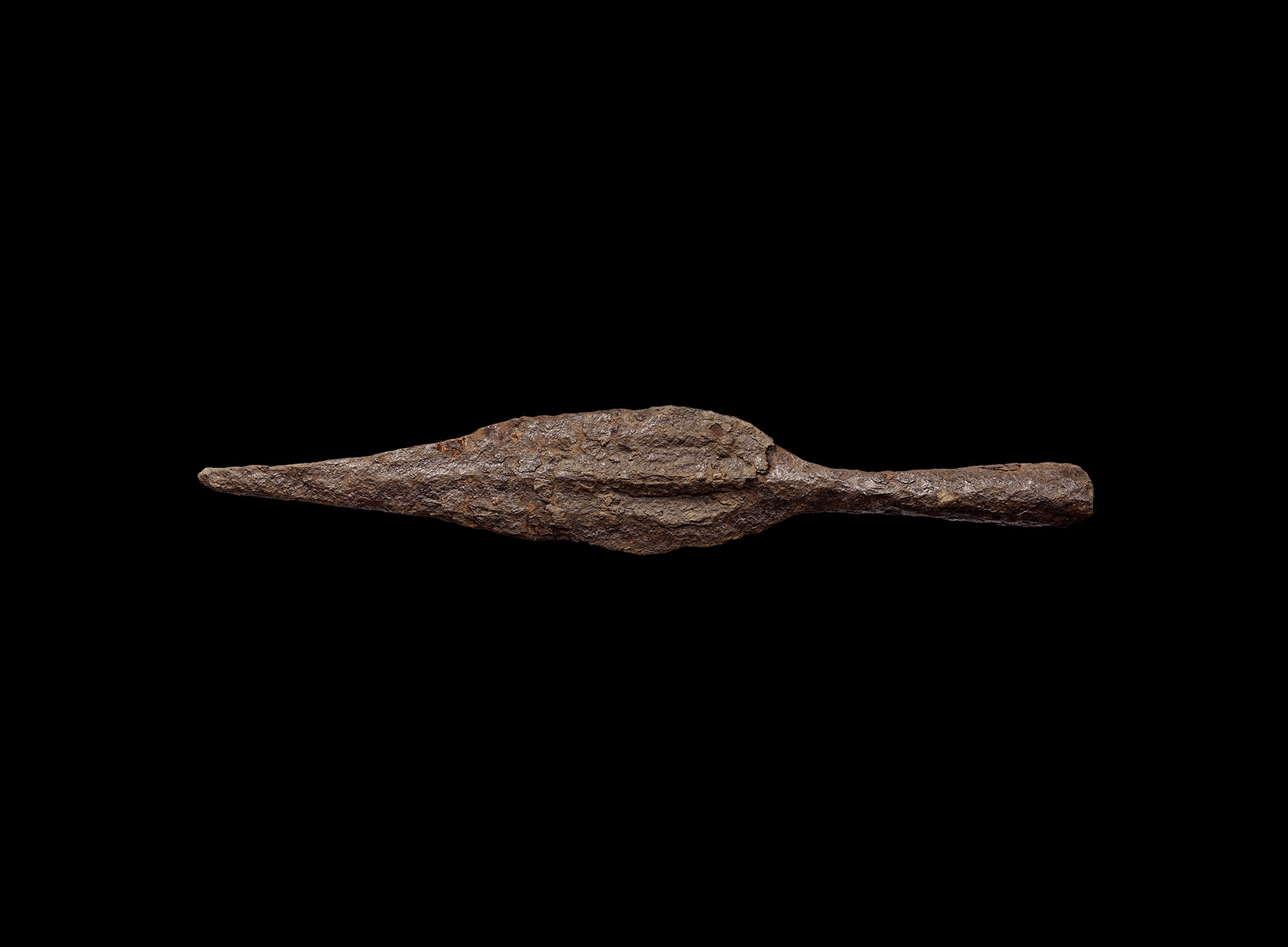
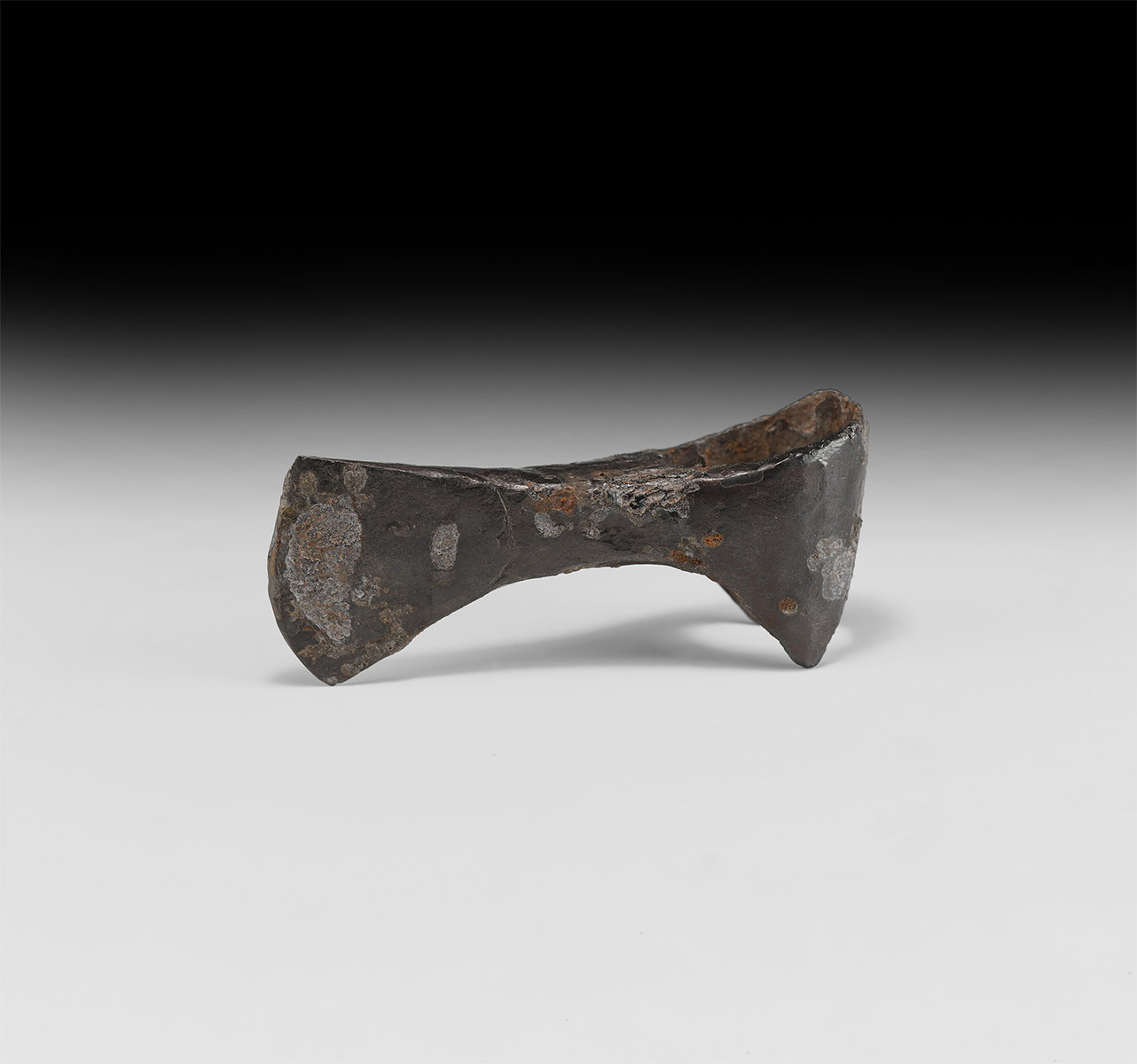
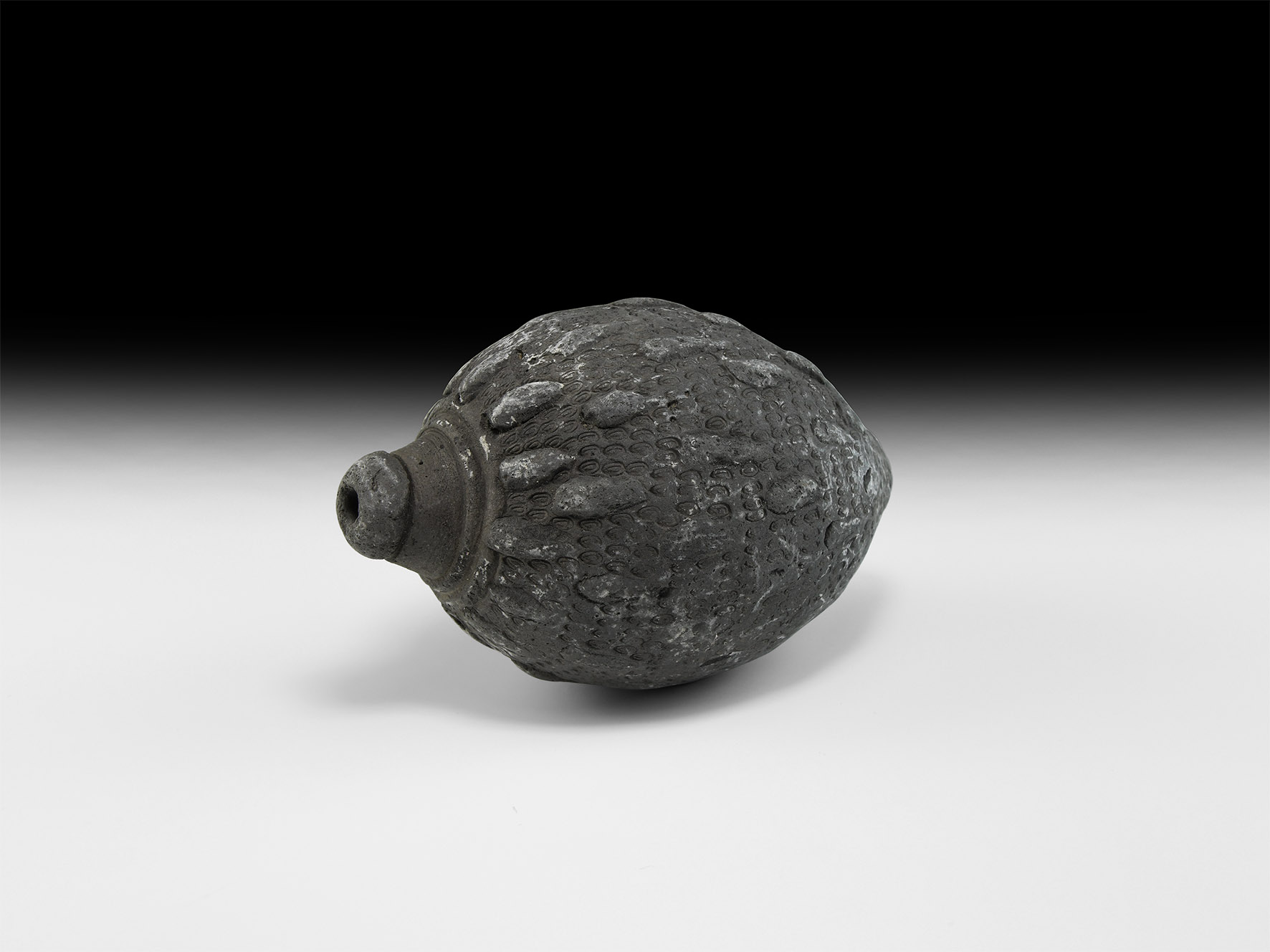
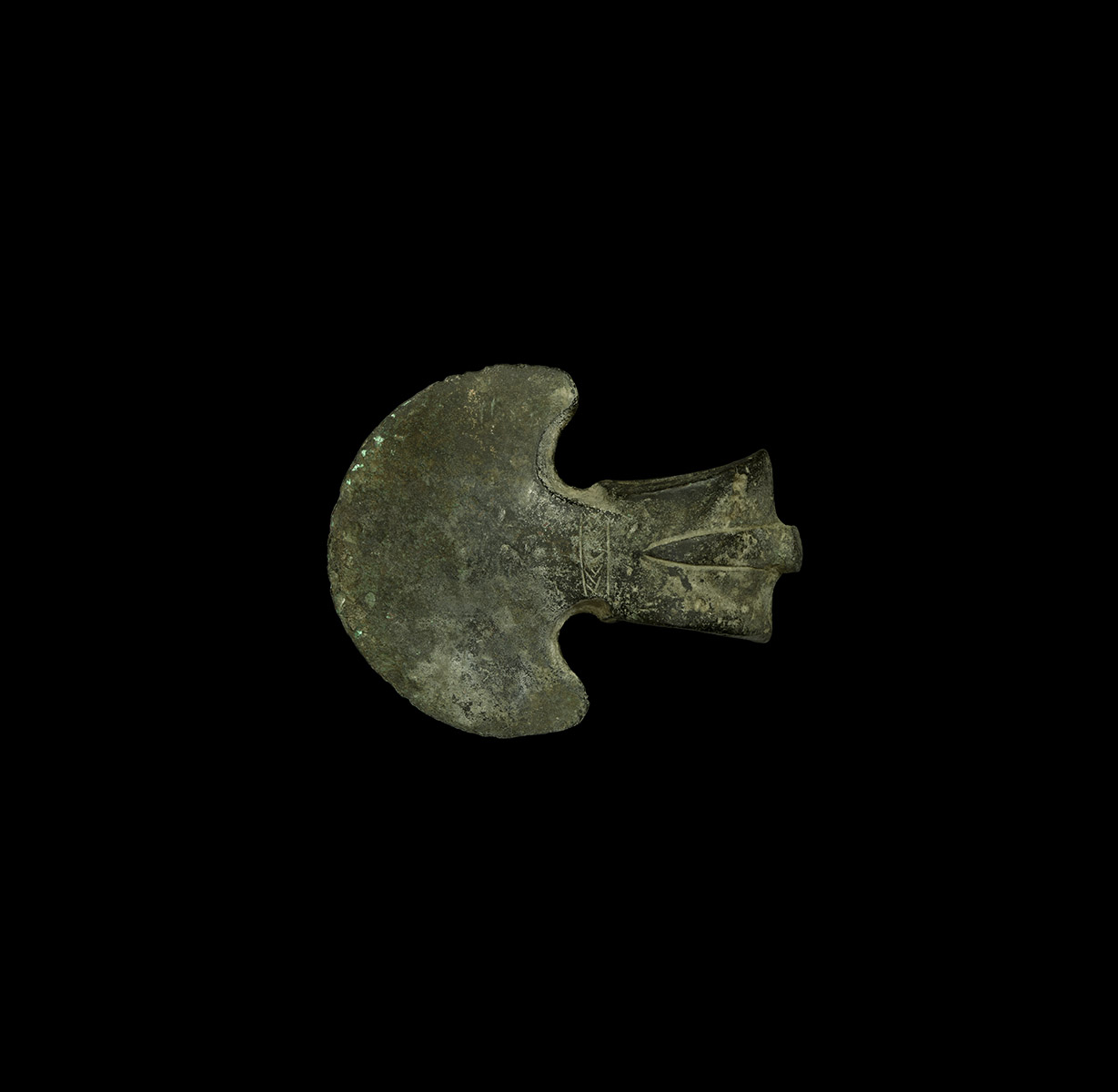
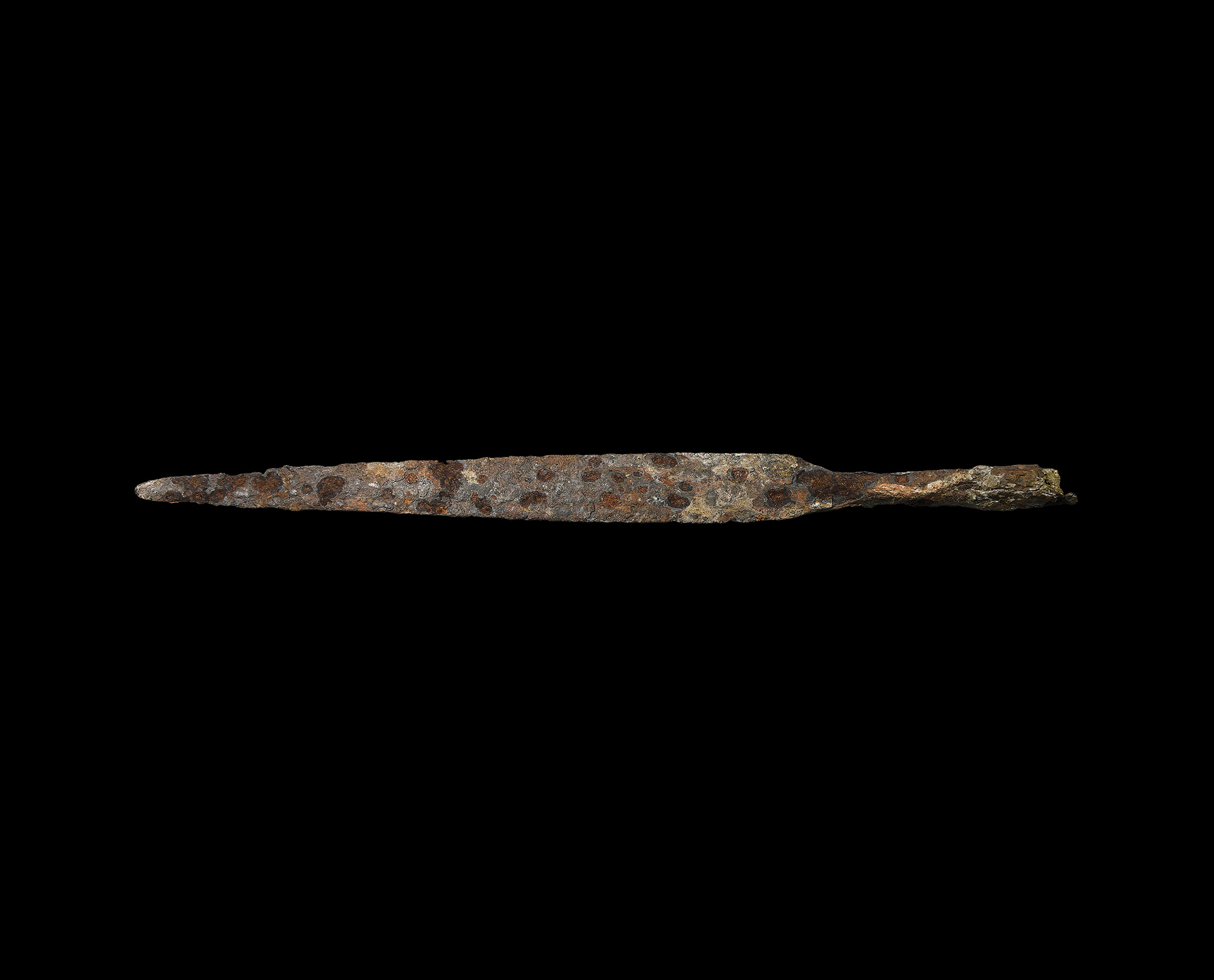
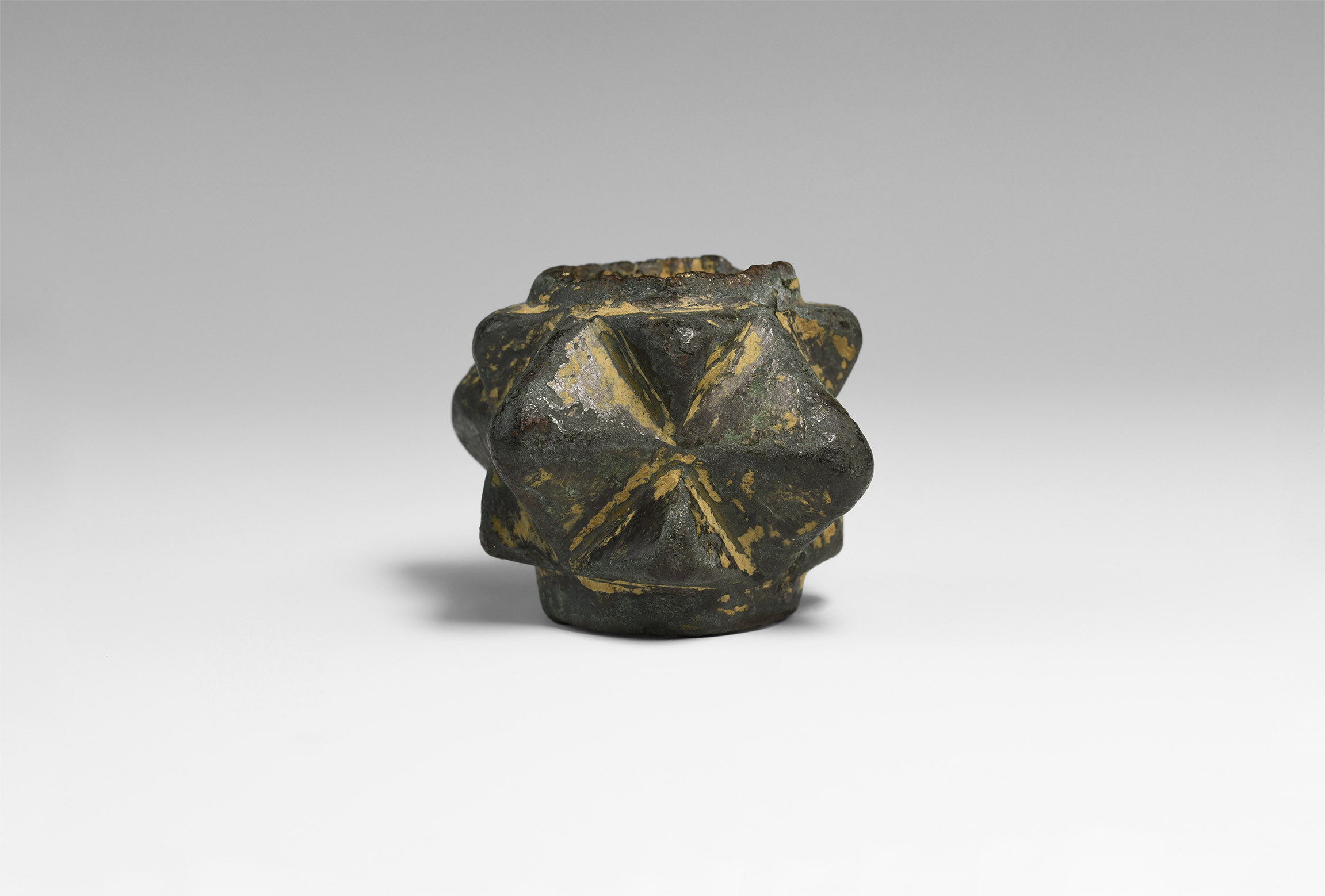









Testen Sie LotSearch und seine Premium-Features 7 Tage - ohne Kosten!
Lassen Sie sich automatisch über neue Objekte in kommenden Auktionen benachrichtigen.
Suchauftrag anlegen